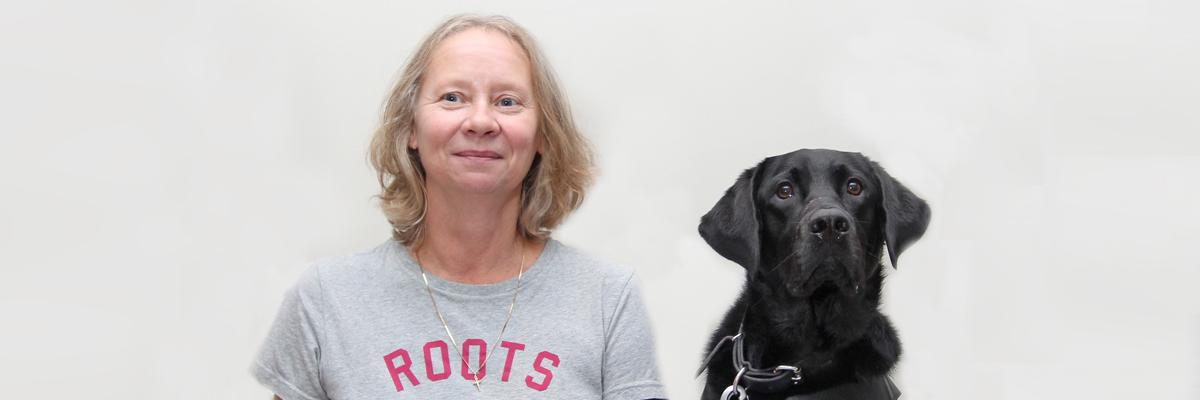By Ben Francis, Guide Dog Mobility Instructor, CNIB Guide Dogs
Guide Dog Mobility Instructors are often asked: “How does the matching process work, when it comes to selecting the right dog for each person?”
CNIB Guide Dogs has a pre-matching process that is completed during the interview stage, whether the applicant is replacing a previous guide dog or applying for their first one. This information is crucial because it helps us select a dog that will meet the specific needs of the individual. So, what are the key factors that we consider when matching a guide dog with someone who is blind?
Physical Compatibility – The dog should be compatible with the handler's build. A dog that is too small may have difficulty guiding a larger person. A dog that is too large may present control issues, as it can learn to use its weight to its advantage.
Temperamental Compatibility – Most of the dog's life will be spent out of harness, so it's important that the handler is compatible with the dog. The dog should be a pleasure to be around, and he or she should not be a nuisance. Some of the factors range from nervous to relaxed, excitable to calm, energetic to lethargic and adventurous to conservative.
Guiding and Following – When assessing the potential partnership for guiding the following compatibility, we look at:
- the speed of the handler and the dog
- the dog's willingness to accept physical contact, poor balance or an uneven gait from the handler, slow or reluctant following and variations in reflexes
- the dog's sensitivity levels – body, hearing and mental sensitivities must be assessed to ensure the dog and handler are compatible. For example, a handler who is quiet with a high-energy dog may experience control issues and be ineffective.
- the dog's ability to accept the handler's natural handle tension and grip
- the dog's reliability when dealing with hazards, such as steps, traffic or overhead obstacles, which can pose a challenge to the handler
If handlers have a specific breed, colour, size or gender of dog that they strongly prefer, these attributes should be considered during the matching process. While specific preferences can't always be accommodated, it can often affect the handler's motivation and perseverance to build a bond and work well with the dog. However, having a specific preference may affect the wait time for receiving a match.
Partnering with a guide dog is a 50/50 relationship. As a Guide Dog Mobility Instructor, it's important to evaluate the strengths and weaknesses of the handler and dog to create a successful partnership.
